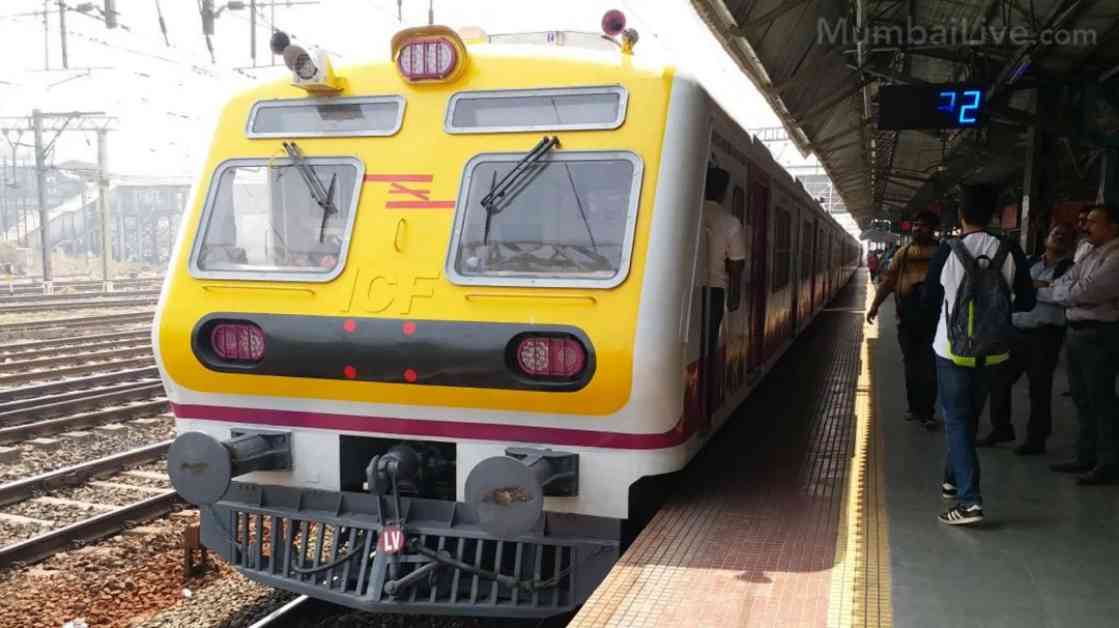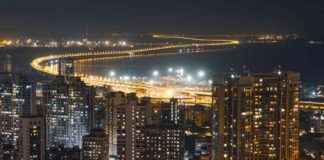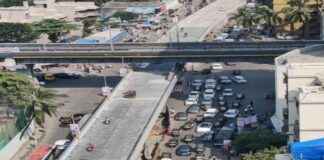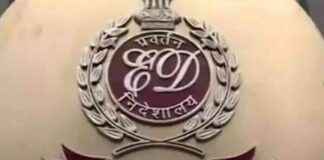Central Railway (CR) in Mumbai is undergoing a significant upgrade that will enhance the commuting experience for millions of passengers. The railway authorities are set to install new platform indicators at all stations between Chhatrapati Shivaji Maharaj Terminus (CSMT)-Kalyan and Panvel lines to display the expected time of arrival of trains. This move comes in response to the growing demand for more accurate and real-time information for commuters who rely on local trains daily.
The estimated cost for this project is between INR 4-5 crore, a significant investment aimed at improving the efficiency and convenience of the railway system. The goal is to provide passengers with timely and reliable information that will help them plan their journeys more effectively and reduce the uncertainty associated with train travel.
Currently, the platform indicators on CR stations only display scheduled train times, destinations, and speed type. However, they do not show the expected time of arrival, leaving passengers guessing about when their train will actually arrive. In contrast, Western Railway station indicators already have the feature of showing the arrival time of trains in minutes or seconds, providing passengers with more accurate information.
To address this gap, Central Railway plans to adopt the system used on Western Railway and upgrade its platform indicators to display train arrival times based on real-time data from the train control system. The new indicators will be linked to the existing train management system (TMS), which is already equipped with the necessary features to provide this information. By updating the system, passengers can expect more accurate and reliable train arrival predictions, enhancing their overall commuting experience.
A survey conducted by CR revealed that the current system only provided accurate train arrival information 75% of the time. This survey was carried out at key stations like Ghatkopar, Kurla, Dadar, Kanjurmarg, Byculla, Bhandup, Diva, Mulund, and Thakurli, highlighting the need for improvements in the existing system. The complaints from passengers about the lack of reliable information have prompted the railway authorities to take action and implement changes that will benefit commuters.
In 2007, Bombardier Transportation was awarded the contract for the design and installation of the TMS on Central Railway stations. The system was first activated in April 2011 between Vidyavihar and Masjid, marking the beginning of a long process to modernize the railway infrastructure. By 2012, the TMS was fully operational, covering 26 stations with 92 platforms between CST and Kalyan. The project cost INR 32 crore and took more than 10 years to complete, demonstrating the scale and complexity of upgrading the railway system in Mumbai.
Benefits of Train Arrival Time Prediction
The introduction of train arrival time prediction on platform indicators brings several benefits for commuters in Mumbai. One of the key advantages is the ability to plan journeys more effectively, knowing exactly when a train is expected to arrive at the station. This information can help passengers avoid unnecessary waiting time on platforms and reduce overcrowding during peak hours.
Additionally, accurate train arrival predictions can improve the overall punctuality of the railway system by providing real-time updates on train schedules. This can help reduce delays and disruptions, making the commuting experience smoother and more efficient for passengers. By leveraging technology to provide timely information, Central Railway aims to enhance customer satisfaction and improve the quality of service for its passengers.
Challenges and Implementation
While the implementation of train arrival time prediction on platform indicators is a step in the right direction, there are challenges that need to be addressed to ensure its successful execution. One of the key challenges is the integration of the new system with existing infrastructure and technology. Central Railway will need to ensure that the new indicators are seamlessly linked to the TMS and can accurately display real-time train arrival information.
Another challenge is the maintenance and upkeep of the system to ensure its continued reliability and accuracy. Regular updates and monitoring will be essential to prevent any glitches or malfunctions that could disrupt the flow of information to passengers. Central Railway will need to establish robust protocols for testing and maintenance to ensure the smooth operation of the new system.
The implementation of train arrival time prediction also requires effective communication and training for railway staff and passengers. Clear instructions and guidelines will need to be provided to ensure that everyone understands how to interpret the new information displayed on the platform indicators. Passenger education programs can help raise awareness about the benefits of the new system and encourage its adoption among commuters.
Future Developments and Expansion
Looking ahead, Central Railway plans to continue its efforts to modernize and improve the railway system in Mumbai. The introduction of train arrival time prediction is just one step in a series of initiatives aimed at enhancing the overall commuting experience for passengers. The railway authorities are exploring new technologies and innovations to further streamline operations and improve service quality.
One potential development is the integration of mobile apps and digital platforms to provide passengers with personalized journey information and updates. By leveraging data analytics and AI technologies, Central Railway can offer customized travel recommendations and real-time alerts to passengers, helping them navigate the railway network more efficiently. This digital transformation will enable passengers to access information on train schedules, delays, and platform changes directly from their smartphones, enhancing the convenience and ease of travel.
In addition, Central Railway is considering expanding the train arrival time prediction feature to more stations and lines across Mumbai. By extending this service to a wider network, the railway authorities can reach a larger number of passengers and improve the overall accessibility of real-time train information. This expansion will require additional investments in infrastructure and technology but promises to deliver significant benefits for commuters in terms of convenience and efficiency.
In conclusion, the introduction of train arrival time prediction on platform indicators is a positive development that will enhance the commuting experience for passengers on Central Railway in Mumbai. By providing accurate and real-time information, the railway authorities aim to improve the efficiency and reliability of the railway system, reducing delays and enhancing customer satisfaction. With continued investments in technology and infrastructure, Central Railway is committed to delivering a world-class commuting experience for millions of passengers in Mumbai.




















